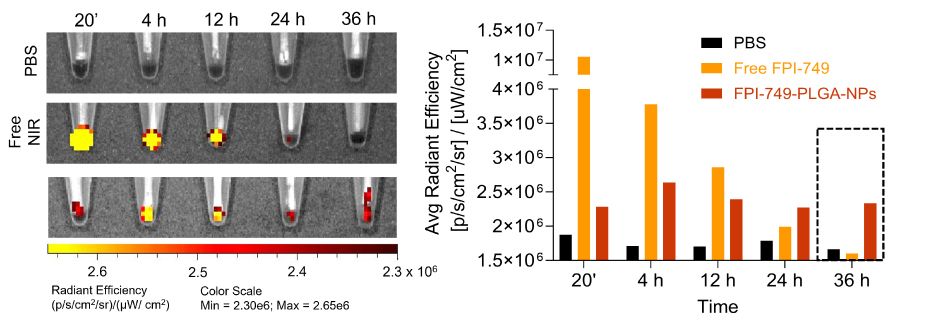SAIL is a comprehensive imaging shared resource with state-of-the-art in vivo imaging technologies, overseen by a nationally renowned team. Located on the Foggy Bottom campus at the George Washington University, the lab provides advanced and affordable bioluminescence and fluorescence imaging technology and diagnostic and image analysis for basic and translational research. SAIL supports GW Cancer Center investigators and clinicians throughout every phase of research to provide quantitative evaluation for biomedical studies.

Fluorescence and Bioluminescence Imaging
Fluorescence and bioluminescence are two imaging techniques commonly used in small animal research to visualize and study biological processes at the cellular and molecular levels. Both techniques rely on the emission of light by certain molecules, but they have different underlying mechanisms.
Fluorescence Imaging
- Principle: Fluorescence imaging uses fluorescent molecules (fluorophores) that absorb light at a specific wavelength and re-emit it at a longer wavelength. This emission is typically in the visible spectrum.
- Application: Fluorescence imaging is widely used in biology and medicine for visualizing specific molecules, cells, or tissues. It is extensively employed in techniques such as immunofluorescence, FISH (fluorescence in situ hybridization), and live-cell imaging.
- Small Animal Imaging: In small animal imaging, fluorescence can be used to label specific molecules or cells with fluorescent dyes or genetically encoded fluorescent proteins. For example, green fluorescent protein (GFP) or red fluorescent protein (RFP) can be expressed in specific cell types to track their behavior in vivo.
- Advantages:
- High sensitivity and specificity when using appropriate fluorophores.
- Allows for real-time imaging of dynamic processes.
- Multiplexing capabilities (using different fluorophores simultaneously).
- High sensitivity and specificity when using appropriate fluorophores.
- Limitations:
- Limited tissue penetration due to high absorbance and scattering of light in biological tissues, which restricts imaging to superficial structures or requires invasive techniques.
- Potential phototoxicity and photobleaching of the fluorophores.
- Limited depth resolution.
- Limited tissue penetration due to high absorbance and scattering of light in biological tissues, which restricts imaging to superficial structures or requires invasive techniques.
Bioluminescence Imaging
- Principle: Bioluminescence imaging uses the enzyme luciferase, which catalyzes a reaction between luciferin and oxygen to produce light. This process is non-invasive and does not require an external light source.
- Application: Bioluminescence imaging is primarily used for longitudinal studies of biological processes, such as monitoring gene expression, tracking cell populations, and studying disease progression in live animals.
- Small Animal Imaging: In small animal research, genes encoding luciferase enzymes can be introduced into cells or organisms, enabling the visualization of specific biological processes. This is commonly done using transgenic animals or viral vectors to deliver the luciferase gene.
- Advantages:
- High sensitivity, even at low cell numbers.
- Non-invasive, as it doesn't require external excitation light.
- Longitudinal studies are feasible, allowing for tracking of dynamic processes over time.
- High sensitivity, even at low cell numbers.
- Limitations:
- Limited spatial resolution compared to fluorescence.
- Relatively low photon yield, which can make it less sensitive than some fluorescence techniques.
- Restricted to imaging luciferase-expressing cells or organisms.
- Limited spatial resolution compared to fluorescence.
SAIL uses the IVIS platform for both fluorescence and bioluminescence imaging. In practice, researchers often use a combination of both fluorescence and bioluminescence imaging to take advantage of their complementary strengths. For example, bioluminescence can provide longitudinal data on the location and quantity of cells expressing a particular gene, while fluorescence can be used for higher-resolution imaging of specific structures or processes.
Melissa Hadley Beaty, M.S.
SAIL Manager
Research Associate/Lab Manager,
Department of Medicine and Department of Microbiology, Immunology, and Tropical Medicine
The George Washington University
George Washington Cancer Center
hadleym [at] gwu [dot] edu (Email Melissa)
For information regarding fees and scheduling, sailcore [at] gwu [dot] edu (subject: Request%20information%20about%20SAIL%20fees%20and%20scheduling) (email SAIL Admin).
